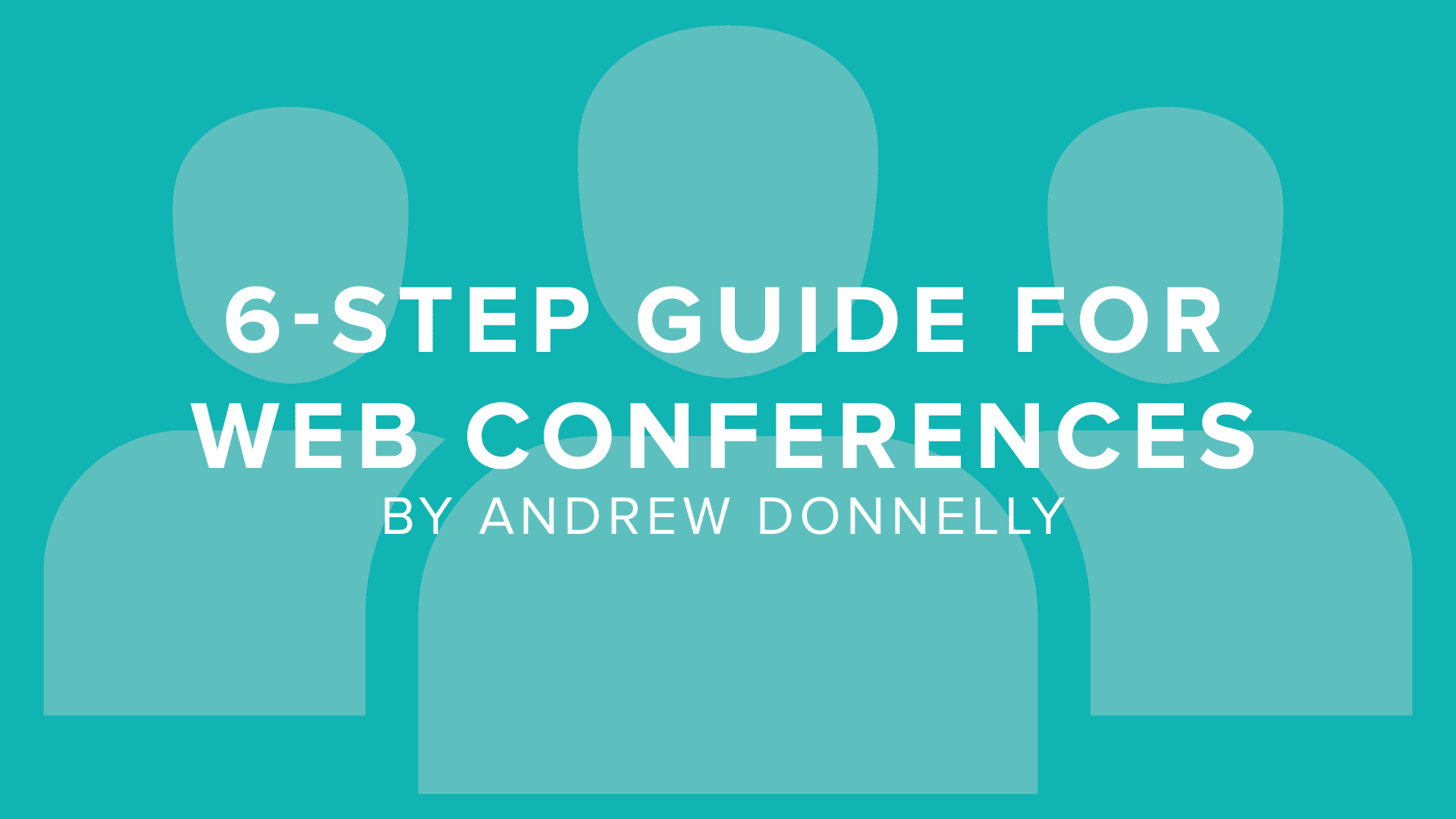With so much of our daily work lives taking place online nowadays, it comes as no surprise to see a growing trend of professionals, including eLearning instructors, taking their meetings into the cloud and hosting web conferences. The benefits are clear: it takes you and your attendees from anywhere in the world and puts you on the same page where you can view the same screen content in real-time. Web conferences save time, increase productivity, enhance communication and reduce travel costs.
However as this growing trend becomes more apparent across a range of industries, it’s necessary to stop for a moment and think: “How can I host a professional web conference? What do I do?”

Write Up – You wouldn’t walk into a face-to-face meeting without preparing beforehand, so before you schedule a web conference and invite your attendees, you should establish the agenda and goals of the meeting. Writing the agenda up will quickly determine who is required to attend the meeting and who will move you towards your meeting goal.
Read Up – Your agenda will help you determine all the content and material which you require for your upcoming conference.
Check your work – it serves as a reminder for you to check that you indeed have all the required material and that it’s up to date. Depending on the content, you may wish to email it to your attendees in advance in case they are also required to read up before the web conference.
Set the scene – just before you start the conference and your attendees join, open all documents on your desktop or have quick shortcuts to them. Once your attendees have joined you do not want to spend time clicking through your folders and files looking for the required material. It wastes time, is distracting, and may result in you accidentally opening confidential information in front of them.
Clean Up – although you are not sitting in front of your attendees, you are nonetheless making a professional presentation. During a web conference, the eyes of your attendees will be glued to everything you are presenting on your screen. Following on from “check your work” above, it is important to not only ensure your conference content is accurate and up to date, but that it also looks professional. Just like a face-to-face meeting, your presentation content plays a large part in the impression you make on your attendees and can say a lot about your company.
Also as part of cleaning up before a web conference, you may need to consider your computer desktop. Many of us have a dozen or more files and folders saved on our desktop which are not only distracting to your attendees but might also be confidential. Create a new folder and drag/drop all your desktop files and folders into this new folder.
Speak Up – during the web conference as you engage in discussions with your attendees, it’s important to ensure everyone is invited to contribute. It’s harder to judge body language when you can’t see the attendees in a web conference. However this is easily compensated for by remembering to give your attendees a chance to raise any questions or concerns. Address each attendee by name and invite them individually to share their views, if they have not already done so in the conference.
If you are hosting a web conference where all attendees know each other, then they will recognize each other’s voices. But if it’s a conference with a group of people who have not previously met, then you can ask your attendees to identify themselves before speaking. This can facilitate communication greatly amongst new associates.
Mix It Up – A web conference does not have to be a stream of one-way communication where you are the sole person talking and presenting. With web conferencing software, such as Mikogo, you can switch presenter so any one of your attendees can present their screen to the rest of the group. If a certain attendee has material they wish to share, they can become the presenter mid-conference and the focus and discussion can then move to their screen content. You can switch presenter once or even multiple times. Multiple presenters can help keep attendees focused on the material and will lead to better attendee engagement as they are directly involved in the presentation.
Follow Up – A web conference ends with the click of a button which can be abrupt. Be sure to wrap up the conference by first thanking everyone for their participation and invite everyone to add any last comments or questions, before you bring the conference to a close.
Although the conference is over, your work is not quite done yet. Send an email to all attendees along with any conference material which was requested. If you have just completed a conference with some new clients or business partners, then this email is a perfect way to network with your attendees and maintain contact. Welcome your attendees to email you back with any questions, comments or feedback they have on the web conference.
Do you have what it takes to become a DigitalChalk guest author? Contact us at marketing@digitalchalk.com to find out more!
Written by: Andrew Donnelly
Andrew Donnelly is the Online Marketing Manager for Mikogo. He manages the Mikogo websites and is responsible for coordinating all website product projects including content creation, communications, social media, press relations, and more. He blogs on a variety of topics related to online collaboration, web conferencing, SaaS and remote work.
Find Andrew on Twitter: https://twitter.com/mktad
